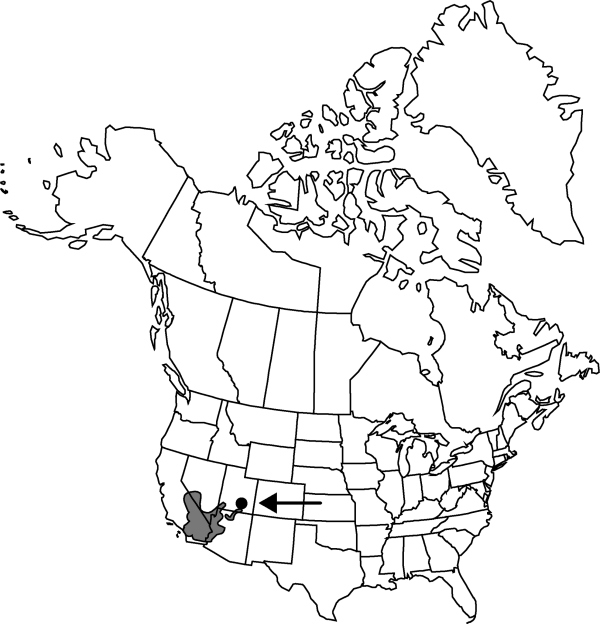Difference between revisions of "Opuntia basilaris"
Proc. Amer. Acad. Arts 3: 298. 1856.
FNA>Volume Importer |
RevisionBot (talk | contribs) m (Bot: Adding category Revised Since Print) |
||
| (7 intermediate revisions by 3 users not shown) | |||
| Line 8: | Line 8: | ||
}} | }} | ||
|common_names=Beavertail pricklypear | |common_names=Beavertail pricklypear | ||
| + | |special_status={{Treatment/ID/Special_status | ||
| + | |code=F | ||
| + | |label=Illustrated | ||
| + | }} | ||
|basionyms= | |basionyms= | ||
|synonyms= | |synonyms= | ||
| Line 20: | Line 24: | ||
-->{{Treatment/Body | -->{{Treatment/Body | ||
| − | |distribution= | + | |distribution=Ariz.;Calif.;Nev.;Utah;n Mexico. |
|discussion=<p>Varieties 4 (4 in the flora).</p> | |discussion=<p>Varieties 4 (4 in the flora).</p> | ||
|tables= | |tables= | ||
| Line 60: | Line 64: | ||
-->{{#Taxon: | -->{{#Taxon: | ||
name=Opuntia basilaris | name=Opuntia basilaris | ||
| − | |||
|authority=Engelmann & J. M. Bigelow | |authority=Engelmann & J. M. Bigelow | ||
|rank=species | |rank=species | ||
| Line 67: | Line 70: | ||
|basionyms= | |basionyms= | ||
|family=Cactaceae | |family=Cactaceae | ||
| − | |distribution= | + | |distribution=Ariz.;Calif.;Nev.;Utah;n Mexico. |
|reference=None | |reference=None | ||
|publication title=Proc. Amer. Acad. Arts | |publication title=Proc. Amer. Acad. Arts | ||
|publication year=1856 | |publication year=1856 | ||
| − | |special status= | + | |special status=Illustrated |
| − | |source xml=https:// | + | |source xml=https://bitbucket.org/aafc-mbb/fna-data-curation/src/2e0870ddd59836b60bcf96646a41e87ea5a5943a/coarse_grained_fna_xml/V4/V4_274.xml |
|subfamily=Cactaceae subfam. Opuntioideae | |subfamily=Cactaceae subfam. Opuntioideae | ||
|genus=Opuntia | |genus=Opuntia | ||
| Line 78: | Line 81: | ||
}}<!-- | }}<!-- | ||
| − | -->[[Category:Treatment]][[Category:Opuntia]] | + | --> |
| + | |||
| + | [[Category:Treatment]] | ||
| + | [[Category:Opuntia]] | ||
| + | [[Category:Revised Since Print]] | ||
Latest revision as of 17:03, 6 November 2020
Shrubs, forming clumps, 1–2(–3) segments tall, to 7–40 cm. Stem segments not disarticulating, blue- to yellow-green, sometimes tinged maroon-purple, flattened, spatulate to broadly obovate or subcircular, thick, 5–22(–35) × 2–13.5(–16) cm, nearly smooth, papillose to puberulent (rarely glabrous); areoles 4–16(–19) per diagonal row across midstem segment, circular to elliptic, 3–5 × 3 mm; wool white to tan, aging gray. Spines 0(–8) per areole, when present, usually in distal areoles, spreading, yellow, straight, acicular, 5–25 mm. Glochids numerous, nearly filling areoles, yellow to red-brown or dark brown, to 3 mm. Flowers: inner tepals pink to magenta throughout (rarely white), 25–40 mm; filaments red-magenta (rarely pale); anthers yellowish; style white to pink; stigma lobes white to cream. Fruits maturing tan, 20–40 × 15–23 mm, dry at maturity, puberulent, spineless (except in var. treleasei); umbilicus 5–12 mm deep; areoles 24–76. Seeds yellowish to tan, ± subspheric but angular, thick, 6.5–9 × 6.5–7 mm, sides smooth or bearing 1–3 depressions; girdle protruding to 1 mm.
Distribution

Ariz., Calif., Nev., Utah, n Mexico.
Discussion
Varieties 4 (4 in the flora).
Selected References
None.
Lower Taxa
Key
| 1 | Stem segments bearing spines in at least several of distal areoles | Opuntia basilaris var. treleasei |
| 1 | Stem segments essentially spineless (rarely 1-few per stem segment) | > 2 |
| 2 | Stem segments broadly obovoid to subcircular, erect; areoles (8-)10-16(-19) per diagonal row across midstem segment | Opuntia basilaris var. basilaris |
| 2 | Stem segments spatulate to elongate, oblong, usually decumbent; areoles 4-8(-9) per diagonal row across midstem segment | > 3 |
| 3 | Stem segments spatulate, apex rounded; areoles 4-8(-9) per diagonal row across midstem segment; Arizona, Utah. | Opuntia basilaris var. longiareolata |
| 3 | Stem segments oblong to narrowly spatulate to subcylindric, apex truncate to rounded; areoles 4-6(-7) per diagonal row across midstem segment; California | Opuntia basilaris var. brachyclad |